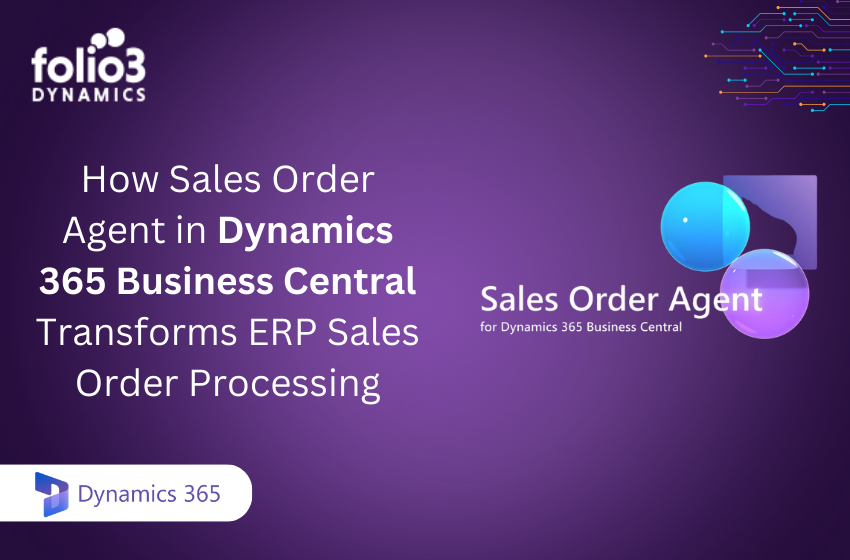Companies use online collaborative productivity software to streamline workflows, enhance team collaboration, and improve project management, regardless of geographical location. Particularly with the rise of remote and hybrid work models, these tools are invaluable in maintaining productivity and connectivity. These platforms also offer robust data protection measures, safeguarding sensitive business data. Additionally, advanced features powered by AI and VR enhance productivity, signaling an exciting future for online collaborative productivity software.
Introduction
In our increasingly interconnected world, the tools we use have a profound impact on our workflows and business operations. Online collaborative productivity software is one pivotal development that has revolutionized how companies function. But what exactly does this technology entail, and why has it become so integral to the modern business environment?
Online collaborative productivity software refers to a category of tools designed to enhance team collaboration and improve productivity within a digital environment. These platforms enable real-time communication, document sharing and editing, task management, and even project tracking across the team, regardless of the geographical location of its members. The software acts as a centralized hub for all business operations, minimizing the barriers to seamless collaboration.
The adoption of such software has skyrocketed in recent years, particularly due to the rise in remote work and the increasing globalization of businesses. Companies are no longer confined to a physical office; instead, they can source the best talent from around the world, and online collaborative productivity software becomes essential for keeping these geographically dispersed teams synchronized. Furthermore, these tools allow for a more organized workflow and increased transparency in task allocation and progress tracking, leading to improved efficiency and productivity. In a fast-paced business environment, the advantages of such software are immense, explaining their growing integration into the modern workplace.
Definition of Online Collaborative Productivity Software
Online collaborative productivity software consists of a suite of applications and platforms that enable individuals to work together virtually to complete tasks and projects. These tools facilitate document sharing, real-time editing, communication, and project management, among other things.
Brief Overview of Its Growing Importance in the Business World
The attractivity of online collaborative productivity software lies in its ability to break down geographical barriers and streamline operations. Companies that have harnessed this power often report improvements in efficiency, communication, and overall productivity.
Historical Context
Evolution of Productivity Software
From the early days of typewriters and physical file cabinets, productivity tools have experienced a sea change with computer technology. Now, cloud-based platforms are the norm, fostering instant collaboration across continents.
Shift from Traditional Methods to Online Platforms
Businesses began seeing the limitations of traditional, on-premise software solutions. The shift to online platforms arose naturally out of a need for greater flexibility.
The Impact of Technological Advancements and Globalization
Coupled with rampant globalization and the growth of the remote workforce, the demand for solutions like online collaborative productivity software has skyrocketed. Technological advancements have made these tools not just desirable but vital.
Benefits of Online Collaborative Productivity Software
Companies, big and small, turn to online collaborative productivity software to stay competitive.
Enhanced Communication and Collaboration
One of the primary benefits of online collaborative productivity software is the enhancement of communication and collaboration amongst team members. By providing a shared workspace where users can view, edit, and comment on different parts of a project simultaneously, these tools foster effective, real-time collaboration. This leads to faster decision making, problem solving and streamlines the overall workflow.
Increased Productivity and Efficiency
Through features like task management, time tracking, and automated reminders, these software tools boost productivity and efficiency. They minimize the chances of miscommunication or overlooking tasks, and ensure that every member of the team is aware of their roles and responsibilities.
Improved Transparency and Accountability
Online collaborative productivity software offers superior transparency and accountability. They provide managers with the tools to monitor progress, assign tasks, and measure performance. Team members can clearly see who is responsible for what task, reducing potential confusion and improving accountability within the team.
Cost-Effective
Most online collaborative productivity software operate on a subscription-based model, eliminating the need for hefty upfront costs. Instead of investing in multiple standalone software solutions, businesses can streamline their operations with one comprehensive platform. Plus, many of these platforms offer scalable options, making them a cost-effective solution for businesses of all sizes.
Flexibility and Accessibility
With the rise of remote work, the demand for flexible and accessible tools has increased. Online collaborative productivity software can be accessed from any device with an internet connection, making it easier for teams to collaborate from different locations and time zones.
Overall, online collaborative productivity software has become an indispensable tool in the modern business landscape. By enhancing communication, improving productivity, and fostering transparency, these tools help businesses stay competitive in an increasingly globalized and digitized world.
Enhanced Communication and Collaboration
Real-time Communication Features
Instant messaging and video conferencing incorporated into these tools break down the conventional barriers to effective communication.
Sharing and Co-editing Capabilities
Multiple team members can work simultaneously on documents and projects – this parallel workflow speeds up project completion times and improves output quality.
Increased Efficiency and Productivity
Automation of Routine Tasks
Automated reminders, notifications, and task assignments allow team members to focus on higher-value work while software handles the mundane.
Streamlined Workflow Processes
Centralizing information and tools in one platform prevents time-loss associated with switching between disparate systems.
Accessibility and Flexibility
Remote Access
Being cloud-based, these tools offer access from anywhere, anytime, facilitating a remote or distributed workforce.
Compatibility with Multiple Devices
Online collaborative productivity software often comes with cross-device functionality, ensuring seamless transition between work environments.
Cost-Effectiveness
Reduction in Physical Resource Needs
Less need for physical resources translates to decreased overhead costs for office supplies and space.
Scalability for Different Company Sizes
Flexible subscription models and scalable features mean companies only pay for what they need, with the ability to adjust as they grow.
Challenges and Solutions
While the advantages of online collaborative productivity software are numerous, it’s important to acknowledge that adopting these tools can present unique challenges. These can range from technical issues such as unreliable internet connections, data security concerns, to human-centered problems like resistance to change, learning curves, and communication barriers. For instance, the transition from traditional work methods to digital platforms can be daunting for some employees, and may necessitate comprehensive training. Data security is another significant concern, particularly in the era of remote work and increasing cyber threats. Businesses must ensure they choose reliable platforms with robust security measures in place. Lastly, the effectiveness of these tools is heavily dependent on the quality of internet connections, which can vary greatly among team members in different locations.
Security Concerns
Data Protection Measures
Sophisticated encryption and rigorous security protocols are typically built into these platforms to protect sensitive information.
Compliance with Regulations
Reputable providers ensure their platforms are compliant with relevant data protection laws and industry standards.
User Adoption and Training
Strategies for Encouraging Adoption
Incentivizing use, demonstrating benefits through measurable outcomes, and selecting user-friendly platforms enhance the adoption rate.
Training Resources and Support
Most providers offer comprehensive resources and support to facilitate learning curves, ensuring employees can leverage the tools effectively.
Future Trends and Developments
The realm of online collaborative productivity software is constantly evolving, shaped by emerging technologies and shifting work practices. Artificial Intelligence (AI) is expected to play a key role, with capabilities such as predictive analytics and automated task allocation poised to further enhance productivity. Simultaneously, the rise of remote and hybrid work models is likely to spur the development of more robust and feature-rich tools, designed to replicate the collaborative environment of a physical office in the virtual sphere. The focus on data security will continue to intensify, with businesses demanding more sophisticated protective measures from software providers. These future trends indicate an exciting and transformative path ahead for the domain of online collaborative productivity software.
Integration with Emerging Technologies (AI, VR, etc.)
Artificial intelligence, virtual reality, and machine learning are poised to further amplify the capabilities of these tools.
Artificial Intelligence (AI)
Artificial Intelligence (AI) is expected to revolutionize online collaborative productivity software, bringing in predictive analytics, smart scheduling, and automated task delegation. AI can analyze past patterns in work habits and processes to predict future trends and behaviors, providing insightful recommendations to boost productivity. Further, AI-powered chatbots can handle routine queries, freeing up human resources for more complex tasks.
Virtual Reality (VR)
Virtual Reality (VR) and Augmented Reality (AR) can mimic physical collaboration in a virtual environment. This technology is especially relevant for remote teams, enabling them to interact in a virtual workspace as if they were in the same room. VR can facilitate more immersive and interactive meetings, training sessions, and presentations.
Machine Learning (ML)
Machine Learning (ML), a subset of AI, can add significant value to these platforms by learning from past data and improving processes autonomously. It can be used to analyze project timelines, workflow efficiency, and team performance, providing insights that can help managers make data-driven decisions to improve productivity and efficiency.
Predictions for the Evolving Role of Collaborative Software in Business
Experts predict deeper integration of collaborative tools within company ecosystems, becoming an inseparable part of corporate DNA.
Conclusion
Recap of the Key Benefits and Importance
Online collaborative productivity software streamlines workflows, fosters innovation through enhanced collaboration, and offers a competitive edge to businesses willing to adapt.
Final Thoughts on the Future of Online Collaborative Productivity Software in the Business Sector
As we step into an increasingly digital future, the role of these versatile tools is certain to expand, reshaping the very fabric of how companies operate and compete.
Through this exploration, one thing is certain—the transformation online collaborative productivity software has brought to the business landscape is profound. As companies continue to adopt these versatile tools, we can expect more innovation, efficiency, and connectivity in the business world.
FAQs
What is online collaborative productivity software?
Online collaborative productivity software are tools that facilitate team collaboration, improve project management, and enable real-time communication, often used in remote and hybrid work models.
How does online collaborative productivity software enhance team collaboration?
These software streamline workflows and foster innovation, providing a platform for real-time communication and collaboration, regardless of geographic location.
What role does AI play in online collaborative productivity software?
AI can revolutionize these platforms by introducing features like predictive analytics, smart scheduling, and automated task delegation.
How can VR be used in online collaborative productivity software?
VR and AR can mimic physical collaboration in a virtual environment, facilitating immersive and interactive meetings, training sessions, and presentations.
How does online collaborative productivity software ensure data protection?
These platforms incorporate robust data protection measures to safeguard sensitive business information, in compliance with relevant data protection laws and industry standards.
How is machine learning applied in online collaborative productivity software?
Machine learning can analyze past data on project timelines, workflow efficiency, and team performance, providing insights to help managers make data-driven decisions to improve productivity and efficiency.


